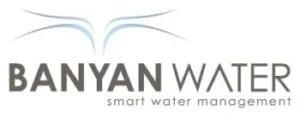Have you noticed that your water costs have risen over the past few years? Wondering where all of this money is going? Perhaps you haven’t noticed any change as of late, but chances are you will. And soon.
What used to be an afterthought when it came to paying the monthly utility bills might now have you scratching your head as to why the cost of your water has increased so drastically. In reality, you’re not alone. Water rates across the US have risen an average of almost 50% across the US since 2010, and have climbed faster than the rates for electricity or natural gas. Unfortunately, when it comes to this water rate predicament there is no end in sight. There are a variety of factors contributing to this, but let’s take a step back and look at a larger picture of the US water market first.
When it comes to municipal water there are two types of suppliers: public and private. Publicly owned water systems are treated and delivered by your municipality, so your bill is probably paid directly to the city you live in, or their department of public works. These organizations are typically set up as non-profit entities. Private water suppliers, on the other hand, are private businesses contracted by your local government to provide water treatment and delivery services for the city. This can save the city enormous amounts of money and resources, but can also create challenges for the end consumer as they typically don’t have a competitive marketplace to choose the provider that best suits their needs. If you’re in a private water market, you’re typically stuck with what you’ve got. Public-private partnerships also exist, making the difference between public and private providers not always clear.
According to research by UNC 50 of 52 states and territories (including Puerto Rico and Washington DC) have a larger population served by public systems than private. This should not necessarily diminish the large role that private water systems play in our country, which serve over 36 million people across the United States. But generally, privately owned water systems do end up costing the end consumer more.
According to a 2017 study performed by Food and Water Watch Monterey, California is home to the nation’s most expensive water, charging the average household $1202/ month for 60,000 gallons of water consumption. California American Water is a private water distributor serving 10 different regions across the state. Its parent company, American Water is responsible for 6 of the top ten most expensive water utilities in the country, primarily in Pennsylvania and West Virginia.
Whether your utility is public or private, the truth is that it’s not really the water coming out of your faucet that you’re paying for. These utilities buy their product (your water) from a wholesale distributor, typically a regional organization that owns and operates major water supplies (i.e. reservoirs, dams, large transmission lines). Then the water is treated and delivered to your house. This is the service you are really paying for. The magic of underground plumbing, the vast network of infrastructure under our cities’ streets, that allows you to turn on the tap and clean fresh water flows out. Many utilities, particularly publicly owned organizations, set their rate structures simply to cover their operating costs. What has driven water rates up more than anything else over the past decade is aging and failing infrastructure that supports the US water systems. Replacing underground piping, treatment facility renovation, and pumping upgrades leave a bill that your utility has to cover, and so this cost is being passed along to their consumers.
Due to rate increases and increased droughts, people are more aware than ever of their need to conserve water. Not only does it help our planet, but it also makes that monthly utility bill a little easier to deal with. This however creates an additional compounding challenge for your utility. Because the ‘product’ your utility sells you is your water, the less you consume, the less revenue they are able to generate. This means that to cover their fixed costs of operations, they have less money. This snowballing trend is why we have seen costs rise so drastically in recent years, but what’s truly scary is there is no end in sight.
So without further ado, we present the top 10 most expensive water providers in the country. If your utility isn’t on this list, don’t relax quite yet. In the last few weeks The White House called on congress to use $287 Billion to ‘rebuild America’s infrastructure, a far cry from the $1.5 Trillion suggested by President Trump two years ago, and well below the $1Trillion needed to address our aging water systems according to the AWWA. Sadly most of the money allocated will likely go to transportation, rather than the invisible infrastructure slowly crumbling beneath our feet. It’s a problem that’s not disappearing so don’t expect to pay less for your water anytime soon.
- Cal American Water- Monterey Peninsula- CA
- Padre Dam Municipal Water District- CA
- Goleta Water District- CA
- Pennsylvania American Water- West – PA
- Pennsylvania American Water- Pittsburgh –PA
- Pennsylvania American Water- Lake Scranton –PA
- Pennsylvania American Water- Norristown –PA
- West Virginia American Water- Kanawha Valley –WV
- Aqua Pennsylvania –PA
- City of Flint- MI
